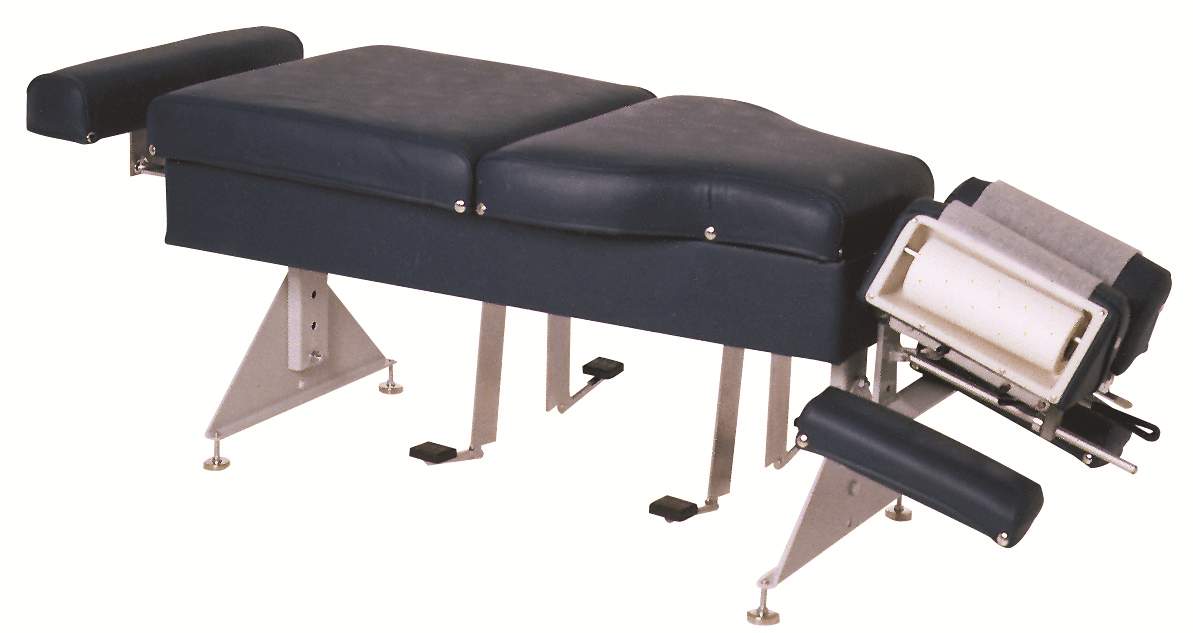
One need not be a mechanic or carpenter to appreciate the old axiom that it’s best to find the right tool for the job. Treatment tables are important in medical practices, but chiropractors and massage therapists’ needs are much more specialized. The differences between treatment modalities — and between chiropractic tables and massage tables — makes an educated choice especially important to best serve the patient.
Chiropractic Vs. Massage: Different Treatments, Different Needs
Both chiropractic and massage concern themselves with returning their patients to full function and well-being. Their approaches are different, however, with chiropractors focused on spinal alignment (and, therefore, the skeletal system) while massage therapists’ primary focus is on muscle tissue. There is overlap between the two. On one hand, uneven muscle tone, a strain, or a pull can lead to spinal misalignment; on the other, that misalignment can lead to muscle inflammation as the body seeks to compensate. But the approaches taken to treatment—and the equipment used in each case—highlight some important differences.
Chiropractic Table Design and Use
Chiropractic tables do share some features in common with massage tables. Both can be height-adjustable to maximize comfort for the professional and the patient alike, and both make use of design features that are intended to maximize patient posture during treatment. But there are features on chiropractic tables that are typically absent from massage tables (about which, see below).
Likewise, traction tables and rolling massage tables—increasingly common fixtures in chiropractors’ offices—tend to be absent from massage therapy. This is due in part to the massage therapist’s more hands-on role, but it also speaks to a divergence in function; the chiropractor’s rolling table is intended to maintain disc separation and aid in maintaining adjustment, rather than being focused more exclusively on muscle groupings.
Massage Table Design and Use
Like their chiropractic counterparts, massage tables take many forms. You can, for instance, find portable massage tables that are strikingly similar to portable chiropractic tables, while stationary massage tables share some adjustability features—including tilt and telescoping functionality—that wouldn’t be out of place in a chiropractor’s office. But because the primary focus is on muscular, rather than spinal, manipulation, massage tables typically will not integrate drop and traction functions, among other features.
Why Not Both? Combining Treatment Modalities
For all the differences in the practices we serve—you’d be hard-pressed to find much in common between a podiatrist and a veterinarian—there is at least one thread that unites all of medicine: every practitioner wants the best possible outcomes for their patients. What might this mean for massage therapists and chiropractors?
In this instance, it’s worth seeing how the two intersect, and how each complements the other, rather than treating one as competition to the other. Many practitioners in both fields combine other forms of traditional and alternative therapies with their disciplines as it is, adding stretching, reflexology, and even therapies like acupuncture to their usual arsenal of approaches. So it’s natural that a growing number of chiropractors and massage therapists are working together out of the same spaces, and serving many of the same patients.
Medical Equipment in Southeast Michigan
Of course, maximizing those opportunities means ensuring that each has the proper medical equipment they need, which is just one reason that many medical professionals turn to Great Lakes Imaging. Our skill in design and medical equipment installation solutions is especially useful in mixed practices since it ensures that everyone has what they need, laid out in a way that ensures that comfort and workflow alike are maximized. To find out more about how we can help you, call for a consultation or answers to your medical equipment questions.
